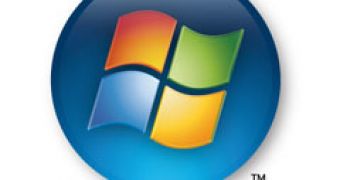According to Microsoft, one reason to install Windows Vista Service Pack 1 Release Candidate Refresh and test drive it is the added performance. While inviting the comparison between Vista and Windows XP SP2, the Redmond company has managed to come short. In its own Windows Vista RTM vs. Windows XP SP2 benchmark put together by Principled Technologies, Microsoft concluded that there was an equivalence between Vista and XP SP2 in terms of performance.
Later on, a comparison between beta releases of Vista SP1 and XP SP3 clearly tilted the balance in XP's favor. Microsoft downplayed the relevance of the benchmark performed by the Devil Mountain Software company, because they were associated with two pieces of software under development.
As a direct result of the tests placing XP SP3 Beta performance on top of that of Vista SP1 Beta, David Overton, Microsoft Small Business Specialist, commented that the third service pack for Windows XP was running on eight times the minimum system requirements for the operating system. According to Overton, Vista would have to be tested with 8 GB of RAM, in order to keep the benchmark fair.
On January 9 2008, Windows Vista SP1 RC Refresh Build 17128 was made available for download. The Build, initially a private release, was subsequently opened up to the general public. A member of the Microsoft Customer Satisfaction in the Business Groups pointed out that the performance gains of Vista SP1 Build 17128 make it worth your while to test drive the RC Refresh.
"One of the reasons to install RC1 will be the improved performance. I've found this first hand, particularly when using Vista Sleep (S3 mode) and Hibernate (S4). With RC1, I have moved to use Sleep (S3) almost exclusively for my office workstations and notebooks, as well as for machines at home. One of the biggest complaints I've heard from customers is the amount of time it takes to recover from S4 and even from S3 in Vista RTM. This combined with some overall sluggishness in machine performance which people found with Vista that they didn't see on their trusty Windows XP SP2 system (particularly in upgrade scenarios)," the Microsoft Customer Satisfaction in the Business Groups member said.
The truth of the matter is that Vista SP1 brings to the table a plethora of performance and power consumption improvements. Microsoft offers an impressive list in the "Notable Changes in Windows Vista Service Pack 1 Release Candidate" whitepaper, but at the same time the company does advise that performance is dependent on several factors including hardware, environment, scenarios, and usage. Almost 25% of the performance enhancements in Vista SP1 has already been deployed in Vista RTM via Windows Update.
"I have found (as have many others) that uninstalling various pre-installed software can improve performance. In more drastic situations, reinstalling the OS with a clean boot makes for an improved customer experience (assuming that the OEM makes it easy for you to find all the needed drivers, add-on software and utilities). (...) My unscientific findings: with a clean install on an old laptop, it takes only 20 seconds to recover from Hibernate, and less than five seconds to recover from Sleep. A DVD inserted in the drive is playing in less than 20 seconds," the Microsoft Customer Satisfaction in the Business Groups member added.

 14 DAY TRIAL //
14 DAY TRIAL //